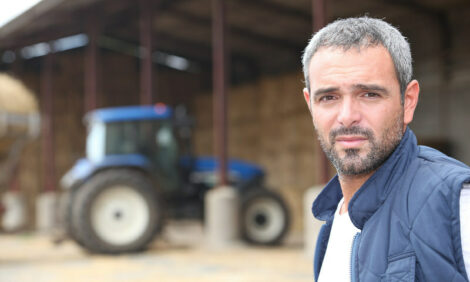



Behaviour and Performance of Weaned Pigs
US - From the University of Minnesota, Li and Johnston have published a paper on the behaviour and performance of pigs previously housed in large groups. They highlighted possible welfare issues when mixing pigs born to group-housed lactating sows. Body weight variation led to more aggression and injuries for the unfamiliar pigs.A study was conducted to evaluate the effects of social familiarity and initial bodyweight (BW) variation at mixing on performance and welfare of pigs born to group-housed lactating sows.
A total of 180 pigs from 24 litters were used in a random design with 4 treatments in a 2 x 2 (social familiarity x initial BW uniformity) factorial arrangement. Pigs were born in group-farrowing rooms where they mingled in large groups of 66 to 80 pigs from 10 d of age. At 8 weeks of age (BW = 23 ± 3.1 kg), pigs were allocated to 20 pens of 9 pigs (5 castrated males and 4 females) in a grow-finish room, with five pens assigned to each of four treatment combinations without consideration of relatedness.
Familiar groups consisted of pigs from one farrowing room, and unfamiliar groups consisted of three pigs from each of three different farrowing rooms. Uniform weight groups were formed by using the middle two quartiles, and variable weight groups by using the heaviest and lightest quartiles of pigs.
Aggression and activity behaviour were directly observed by either scan or continuous sampling during a period of four hours on the first 3 days, day 7 and day 14 after grouping. Injury scores were assessed on all pigs immediately before and 48 hours after grouping. Weight gain and apparent feed intake were measured every 2 weeks for 14 weeks. Aggression in familiar groups was minimal throughout the observation periods.
Compared with that in familiar groups, total duration of fighting was greater in unfamiliar groups on day 0 (upon grouping, 48.5 versus 0.5 ± 10.88 s/pig(-1).4h(-1); P<0.001) and on day 1 (10.8 versus 0.4 ± 3.24 s/pig(-1).4h(-1); P< 0.05) after grouping.
Unfamiliar pigs had greater injury scores (6.6 versus 1.8 ± 0.28; P<0.001) and spent less time eating on day 0 (5.1 versus 8.8 ± 0.92 per cent of total observation time; P<0.01) after grouping compared with familiar pigs.
Average daily gain and average daily feed intake were lower in unfamiliar groups during the initial 6 weeks but not for the entire 14-week period in comparison with familiar groups.
Weight variation did not affect behaviour and performance in familiar groups but increased aggression-induced injuries in unfamiliar groups.
The results indicated that grouping unacquainted pigs derived from large groups induced overt aggression, associated injuries and initial reduction in performance, which causes welfare concerns on mixing pigs born to group-housed lactating sows.
Reference
Li Y.Z. and Johnston L.J. West Central Research and Outreach Center, University of Minnesota, Morris MN 56267. Behavior and performance of pigs previously housed in large groups. J Anim Sci. 2008 Dec 19. [Epub ahead of print]








